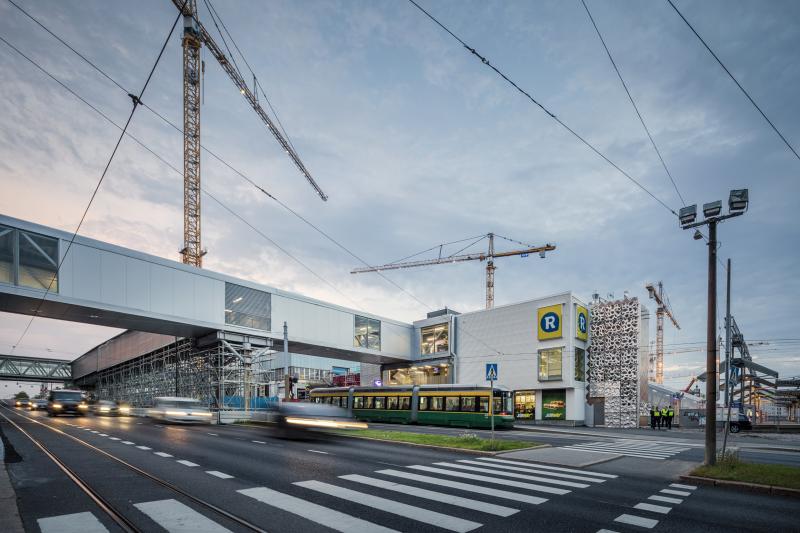Noise abatement
Environmental noise is a significant factor that lowers the quality and comfort of the living environment in Helsinki. Continuous loud noise may also cause health hazards. Road traffic is the primary source of harmful noise in Helsinki. 37 per cent of the residents of Helsinki live in areas where the noise level caused by road traffic exceeds the limit value of 55 dB during the day. Noise is locally caused also by construction and repair work, public events and restaurants, for example.
The noise abatement efforts by the City of Helsinki are directed by the Noise Abatement Action Plan for 2018–2022. It contains measures related to urban planning, affecting the noise source, and structural noise abatement, among other things.
Harmful noise is also prevented through land use and transport planning. Transport investments and land use are always planned together in Helsinki, which also makes it possible to pay attention to noise abatement.

The soundscape was improved
In 2020, driving speeds were mitigated by increasing the number of speed cameras and building speed bumps, among other measures. The noise-absorbing road surface was renewed on Kauppakartanonkatu (920 m) and in the section of Roihuvuorentie between Abraham Wetterin tie and Tulisuontie (950 m). The City also campaigned for the use of non-studded winter tyres. More information on the promotion of sustainable and noiseless mobility is provided in the ‘Transport’ chapter of this report.
Approximately EUR 1 million is allocated to the noise barriers along the streets in Helsinki annually. In 2020, approximately half a million euros from this appropriation were used to complete the noise barrier in Tapanilankaari and plan a noise barrier for Vanha Porvoontie. Highway noise abatement is primarily the responsibility of the Uusimaa Centre for Economic Development, Transport and the Environment and the Finnish Transport Infrastructure Agency. The draft plans prepared for the improvement of Hämeenlinnanväylä and the Kuninkaantammi interchange were made available in late 2020. The purpose of the project is to streamline traffic and improve noise abatement. The implementation of the Herttoniemi metro noise barrier is delayed because of the City’s financial situation.
The exceptional year quieted the city
The exceptional year 2020 was reflected in the soundscape of Helsinki at least in some places. Particularly in the spring months, the amount of traffic at measuring points decreased considerably. The amount of traffic increased towards the end of the year but fell below the numbers for 2019.
Recreational areas were in heavy use due to the city residents seeking out peaceful environments. Quiet or peaceful places are very important to the residents of Helsinki, as indicated by the results of the resident survey published in autumn 2020. In the survey, the respondents marked places that they found to be quiet and peaceful around the city. These particularly included green areas and places near bodies of water.
With regard to events, 2020 was quieter than usual due to the cancellation of large outdoor concerts. In contrast, construction and demolition operations continued as usual in the city. Of the major projects, the renovations of Hämeentie and the Olympic Stadium were completed. The construction of Jokeri Light Rail will continue for a few more years. A great number of residents are exposed to noise from the construction along the tracks. The construction of the Jokeri Light Rail is primarily supervised by the Uusimaa Centre for Economic Development, Transport and the Environment. It has been noted in the Jokeri Light Rail and Hämeentie projects that the harmful noise experienced by the residents has been successfully mitigated with efficient information sharing, scheduling of the work and noise abatement measures.
Eyes on the future
As the city becomes denser, it is also important for attention to be paid to the soundscape and noise abatement in the future. Extensive infrastructure projects and local construction projects will continue for several years.
